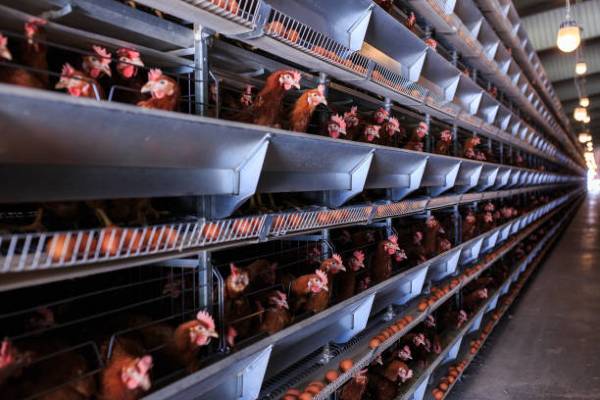Poultry Cage System with Automatic Feeding for 500,000 Chickens in Uganda: An Efficient Solution
Introduction
The poultry industry in Uganda is rapidly growing, and with the increasing demand for chicken meat, efficient and scalable solutions are crucial. One such solution is the implementation of a poultry cage system with automatic feeding, capable of handling up to 500,000 chickens. This article explores the benefits and details of such a system, providing valuable insights for poultry farm owners and investors.
System Overview
The poultry cage system with automatic feeding is designed to optimize the efficiency of chicken farming operations. The system integrates advanced technology to ensure proper nutrition, health, and growth of the chickens, while reducing labor costs and enhancing productivity.
Key Features
– Capacity: The system is capable of housing up to 500,000 chickens, making it suitable for large-scale poultry farms.
– Automatic Feeding: The system features an automated feeding mechanism that dispenses feed at regular intervals, ensuring consistent nutrition for the chickens.
– Health Monitoring: Integrated sensors and cameras allow for real-time monitoring of the chickens’ health and behavior.
– Environment Control: The system includes features for temperature and humidity control, creating an optimal environment for chicken growth.
Benefits
– Increased Productivity: The automated feeding system ensures that chickens receive the right amount of feed, leading to faster growth and higher yields.
– Reduced Labor Costs: The system minimizes the need for manual feeding, reducing labor costs and allowing farm owners to focus on other critical tasks.
– Improved Animal Welfare: The controlled environment and automated feeding contribute to better animal health and welfare.
– Scalability: The system is designed to scale up as the farm grows, making it a long-term investment for poultry farm owners.
Case Study
A leading poultry farm in Uganda has successfully implemented a similar system, achieving a 30% increase in productivity and a 20% reduction in labor costs. The farm owner attributes these improvements to the efficiency and reliability of the poultry cage system with automatic feeding.
Implementation Steps
1. Site Assessment: Evaluate the farm’s layout and infrastructure to determine the feasibility of the system.
2. System Design: Customize the system to fit the specific needs of the farm, including the number of chickens and the desired growth rate.
3. Installation: Professional installation services ensure that the system is set up correctly and efficiently.
4. Training: Provide training for farm staff to operate and maintain the system effectively.
Conclusion
Investing in a poultry cage system with automatic feeding for 500,000 chickens in Uganda can significantly enhance the efficiency and profitability of poultry farming operations. As the industry continues to grow, such advanced systems will play a crucial role in meeting the increasing demand for chicken meat.
For more information and to receive a free poultry farming design and equipment quotation from LIVI Mechanical, please leave a comment below or contact us directly.





